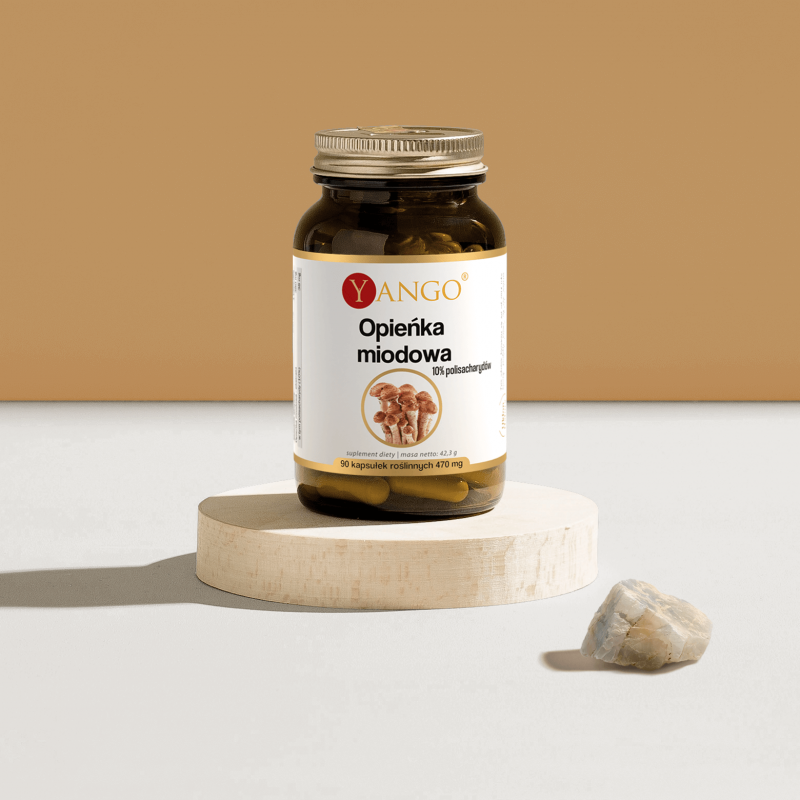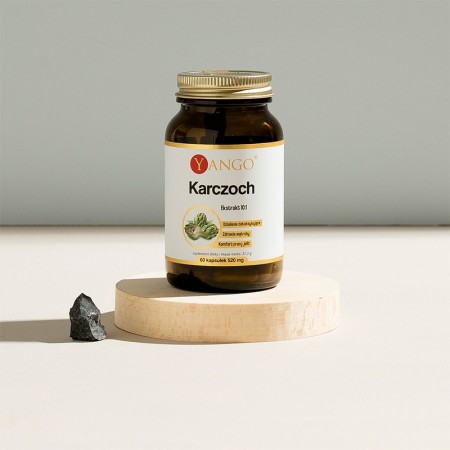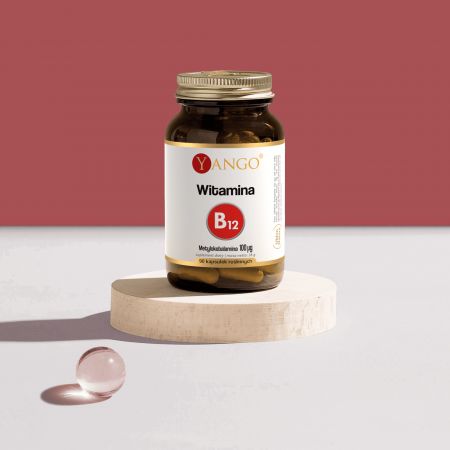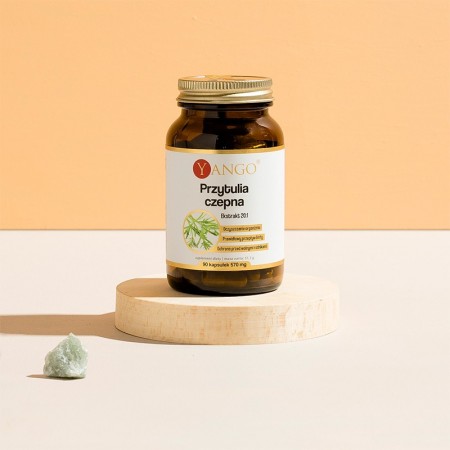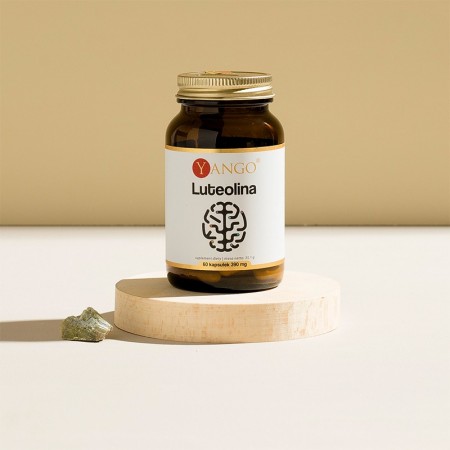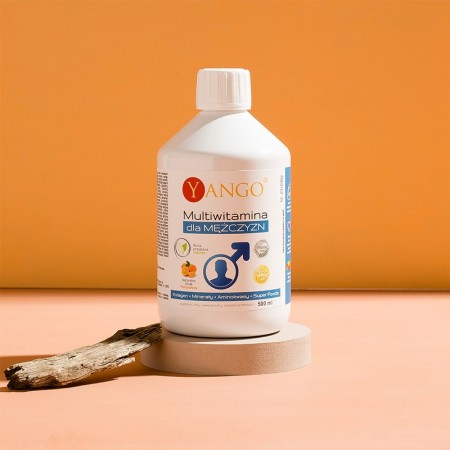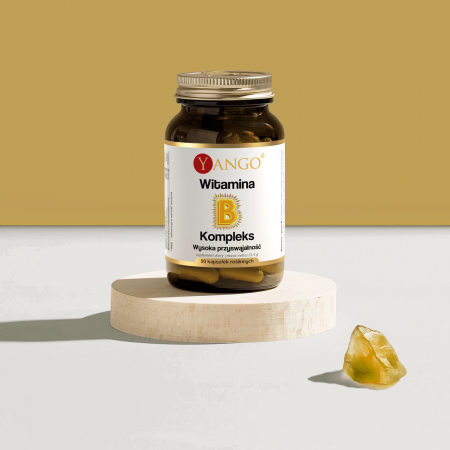Honeycress - 90 caps.
 High-quality extract of the honeycress.
High-quality extract of the honeycress.
 Support your immune system.
Support your immune system.
 Prebiotic nutrition for bacterial flora.
Prebiotic nutrition for bacterial flora.
 Highly standardized for polysaccharide content.
Highly standardized for polysaccharide content.
-
 Vegan
Vegan
-
 Standaryzowany
Standaryzowany
-
 Polska firma
Polska firma
Honeycreeper - 10% Polysaccharides
The honey bunting, also known as Armillaria mellea, is one of the most distinctive forest mushrooms. Its name comes from the peculiar aroma, reminiscent of honey, that the mushroom spreads around its fruiting bodies. However, it is not only its aroma that attracts attention. It is also valued for the wealth of properties it offers.
In recent years, interest in the honeycreeper has increased due to scientific research conducted on it. It has been discovered that the presence of unique chemical compounds - in particular, polysaccharides - is responsible for its valuable properties. Due to their chemical profile, the polysaccharides present in honeycress are distinguished by the following properties:
- Beta-glucan is known for its ability to strengthen the immune system and stimulate the production of natural antibodies. It also acts as an antioxidant, helping to neutralize harmful free radicals in thebody1,2,3.
- Galactomannan and heterogalactan, on the other hand, are considered prebiotics that promote the growth of beneficial intestinal flora, which affects the health of the digestivetract4,5,6,7.
Our honeycomb extract is highly standardized to contain 10% polysaccharides.
Polysaccharides present in honeycress
The polysaccharides present in honeycurrant show significant effects on the human body, making the fruiting bodies of this edible mushroom an extremely valuable source of these natural substances. Studies show that these chemical compounds can have a positive impact on many aspects of our health. First of all, they can strengthen the immune system by stimulating immune cell activity and antibody production. Their ability to activate the immune response can help the body fight infections and reduce the risk of disease.
In addition, polysaccharides from honeybush exhibit anti-inflammatory effects, which may be particularly important for various inflammatory conditions, such as autoimmune diseases and heart disease. By inhibiting inflammatory reactions, these compounds may promote the alleviation of symptoms associated withinflammation8,9,10,11.
Additionally, the polysaccharides present in honeybush may have beneficial effects on gastrointestinal health. They act as prebiotics, or nutrients for beneficial gut flora. By stimulating the growth of these microorganisms, polysaccharides can contribute to maintaining the balance of the entire intestinal microbiome and improving gastrointestinal function.
Does honeycress belong to edible mushrooms?
Many people may have doubts about the question of the edibility of the honeycress. It is not one of the most commonly harvested mushrooms, such as ceps, butters, etc. So it's not surprising that the question of its consumption can be questionable, and some people are even concerned about whether the honeycreeper is poisonous.
The honeycreeper is an edible mushroom, consumed in many cuisines around the world. At the same time, it is worth remembering that identifying mushrooms is a complex process and requires knowledge and experience. For this reason, it is recommended that mushrooms be picked and eaten only by experienced mushroom pickers or after consulting an expert.
How to identify the honeycreeper?
The honeycreeper is one of the most common mushrooms in Polish forests and in other regions of the northern hemisphere. It has several characteristic features that help in its recognition:
- Hat appearance: The diameter of thyme hats varies from 3 to several centimeters. Young hats are more convex and then flatten as the fruiting bodies mature, leaving a small "hump" in the middle. The color of the hat can vary, but is often yellowish, orange or reddish brown. The surface of the hat is covered with dark scales, which are more visible at the brim.
- Stem shape: The stem of the honeycreeper is quite massive, cylindrical and has a characteristic ring. Its surface can be smooth or slightly fibrous, basty and reaches a length of about 15 cm.
- Scent: One of the most distinctive features of the honeycreeper is its smell, which resembles the smell of honey or sweet vanilla. It is worth paying attention to this when collecting it yourself in the forest.
- Mycelium growth: the honeycress fungus develops most abundantly on the roots or trunks of trees - mainly weakened or dead deciduous trees. The number of fruiting bodies in one place can reach up to several dozen. It can also form dense, extensive mycelium underground, which can be visible in the form of a whitish network.
When harvesting the Opuntia, be careful not to confuse it with, among others, Elm Buttermilk (you'll recognize it by its yellow flesh, bitter taste and sour odor) or Mottled Scale (orange hat and yellow, bitter flesh). It's also common to confuse the downy fungus with the venomous hellebore, which is slightly smaller and usually has a dark brown color, brown blades and a convex cap that slowly begins to flatten as the fruiting bodies mature.
Remember that identifying mushrooms can be difficult and requires experience. If you have any doubts, it is better to consult an experienced mycologist or mushroom expert before picking and eating any mushrooms. If you want to avoid doubts and at the same time continue to benefit from the properties of the watercress, you can turn to natural supplementation with watercress extract, standardized to contain min. 10% of polysaccharides. Remember that the season for honeycress lasts in Poland from mid-September to late October. This is when we experience a rash of young honeycress. Supplementation is therefore an excellent option for maintaining continuity in the consumption of polysaccharides even outside the honeybush season.
How do you prepare honeycress for consumption?
Honeycreepers are very tasty mushrooms if you prepare them properly. It is not edible raw, as it can irritate the stomach and be heavy on the entire digestive system - so be careful to always precook the harvested mushrooms. In order to make the honeycreeper edible, it is necessary to prepare it properly to ensure safety and fullness of flavor. The first step is to collect fresh mushrooms, which should be firm, without visible damage, mold or signs of parasites. It is recommended to avoid over-ripe specimens, which can be hard and fibrous. Next, the mushrooms should be thoroughly cleaned, removing any debris such as leaves, tree needles, sand and insects. This can be done gently with a brush, sponge or paper towel.
Once cleaned, you can proceed to preparing the watercress for further processing. It is a good idea to cook it first, even if you intend to use it later in other ways, such as making a mushroom sauce or sautéing it. Honey sinks are often used in various dishes or used as a side dish in stewed, fried or marinated form. It is also important to store them properly in a cool and dry place for freshness.
Remember to always use caution and make sure that the identification of the mushroom is correct. If you have any doubts or are unfamiliar with mushrooms, it may be a much safer choice to use honeycomb extract in the form of a natural dietary supplement.
WE FOCUS ON QUALITY!
We produce YANGO supplements maintaining the highest rigors of quality control. We take care of the appropriate concentration of active substances and total safety of the products. We believe that in this way we can effectively help you achieve your goals.

